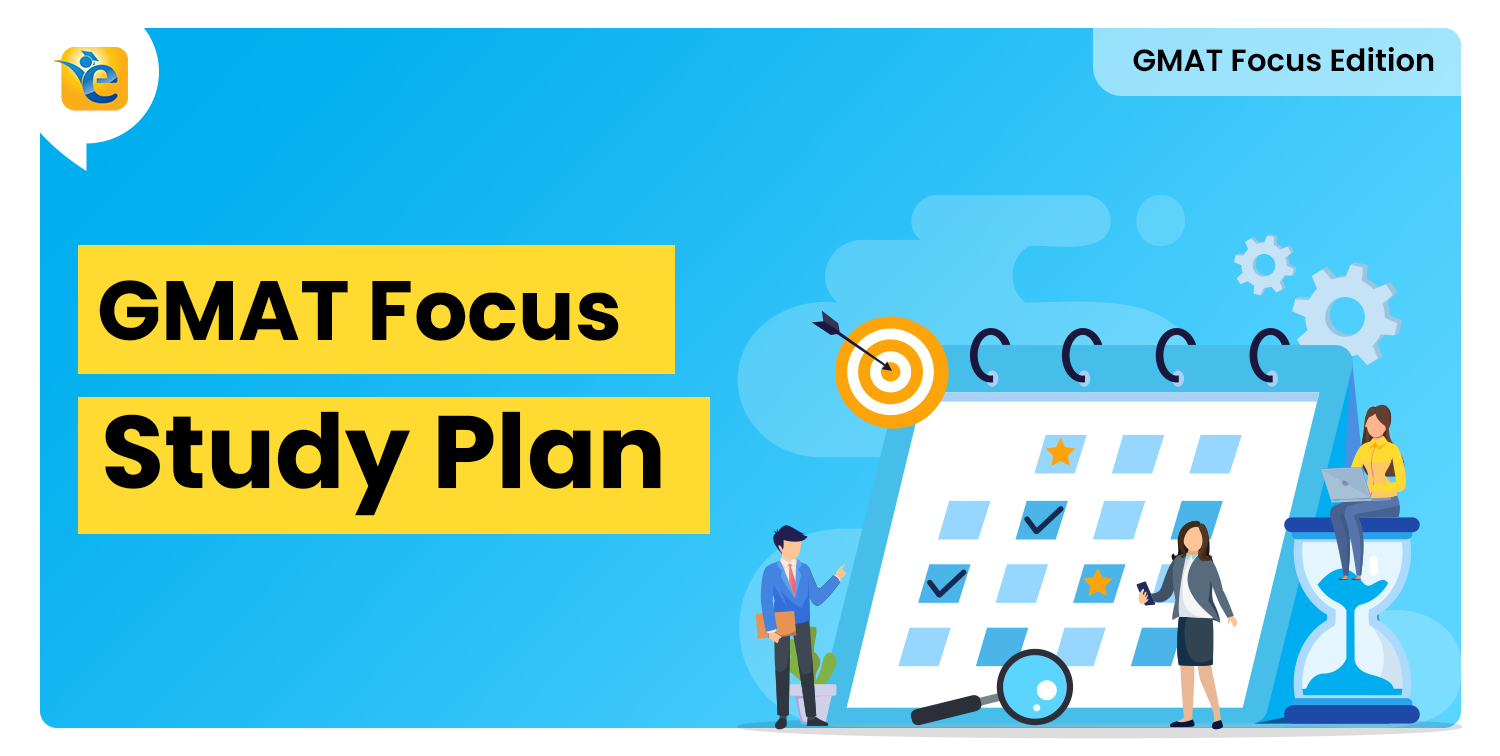How to Ace GMAT Reading Comprehension
We are the best in the industry in finding out the best processes to learn and develop core skills to ace any sub-section of the GMAT. Not that we love to blow our trumpets. We present facts backed by humongous amounts of data since our inception. Our revolutionary 3-step Meaning-Based Approach to solving SC problems has changed how this sub-section was perceived in the industry. Our unique and effective Pre-thinking process to ace CR is praised all over social media. And we offer nothing less but the best approach to ace GMAT RC irrespective of your starting ability in this sub-section. So if you’re a GMAT aspirant wondering what are the best strategies to ace GMAT RC, you’ve reached the right place!

1. Outline of the article
2. 4 Core Skills to build to improve GMAT Reading Comprehension
- Skill #1 – Read and Comprehend
- Skill #2 – Connect Sentences
- Skill #3 – Summarize Passages
- Skill #4 – Translate Answer Choices
It is time to reveal and discuss what you have been patiently waiting for – the core skills (mentioned above) that one needs to improve in RC and tame it for a 700+ score.
2.1 Skill #1 to ace GMAT RC – Read and Comprehend
Yes, it is that easy. Just read and comprehend to ace GMAT RC. You may say, “I definitely know how to read, but I am still not good at RC.” Now, reading in RC does not mean just reading the black words on a white background. We must NOT read an RC passage the way we read a magazine, a novel, or a newspaper. While reading an RC passage, we must become an “Active” reader. An active reader reads with complete involvement to retain and reproduce when asked questions. Such a reader pays attention to words – commonly called keywords – that present a definite direction to information in the passage. Following this direction attentively through active reading not only helps us comprehend the information presented in the passage but also enables us to make valid inferences.
Active reading is the first skill we teach at e-GMAT to ace RC. Want to activate your active reader mode? Click here (for the RC Session) to watch our RC expert at work and learn how he turns every participant into an active reader within a few minutes and how effective this transformation is.
2.2 Skill #2 to ace GMAT RC – Connect Sentences
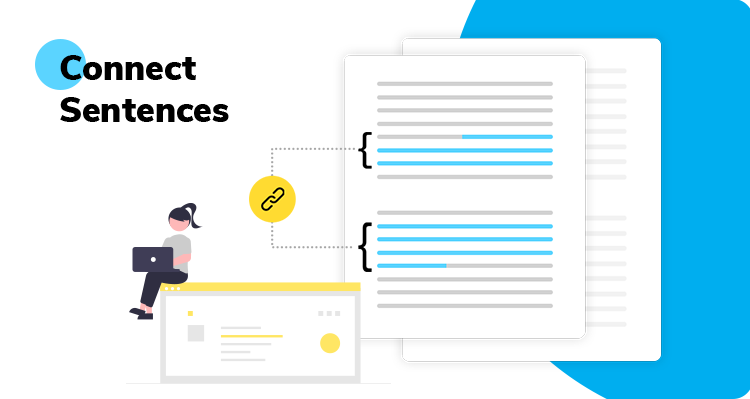
This core skill directly corresponds to the following point in the section What is Measured mentioned in the GMAT Official Guide: Understand the purposes and functions of passage components and the logical and rhetorical relationships among concepts and among pieces of information.
Since every RC passage is written with a unified central point, it is mandatory to identify the relationship between sentences and paragraphs for optimum comprehension. This skill is imperative to correctly answer Inference and Detail questions as these questions pertain directly to the information presented in the passage – implicitly and explicitly. Correct inferences depend on an accurate understanding of the correlation between sentences, as substantiated by the GMAC Official Guide in the section named What Is Measured: Anyone who thoroughly comprehends a text should be able, with a little reflection, to determine what further information can be inferred from it.
Let’s understand the efficacy of this skill through a simple example. Say, the author of the passage talks about two ideologies and says, “the critics even say that they are like two sides of a coin.” We must first understand that the information presented between the quotes is NOT by the author. It is a third-party statement – some critics. Then, the word “even” tells us that the author does not subscribe to what the critics say. Comprehension to this level is only possible when we connect various pieces of information logically in the given context. Watch our session on “How to Improve GMAT RC” to witness this phenomenon.
2.3 Skill #3 to ace GMAT RC – Summarize Passages
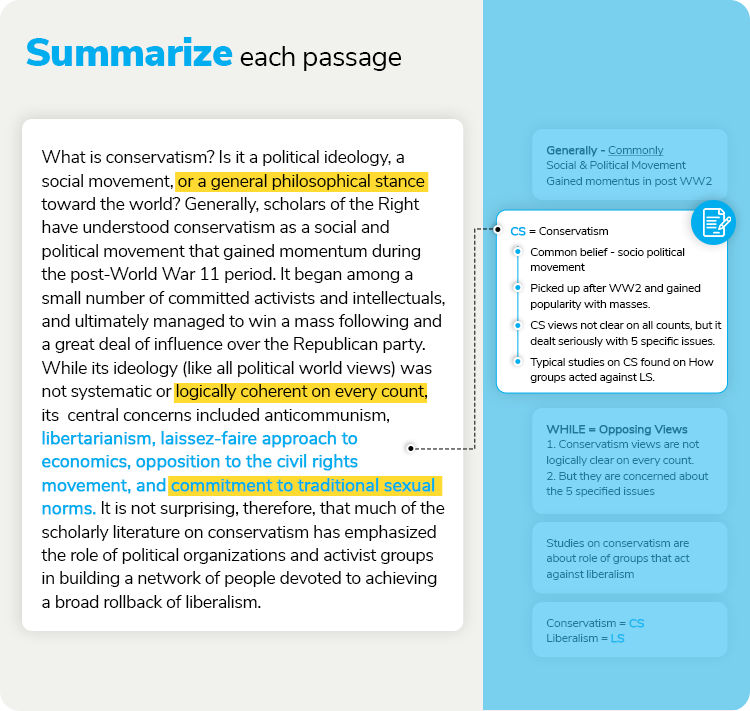
Are not reading actively and comprehending the passage well enough sufficient to answer questions? At e-GMAT, we say no. It is equally essential to summarize each paragraph of the passage and then condense them to obtain the passage summary in a line or two to reinstate and retain the central theme. The passage summary has a two-pronged effect. Firstly, it prevents us from losing the sense of what is discussed in the passage. Secondly, it helps us answer the Main Point question correctly. In section 5 of a related article, while describing the Main Point Question type, we have discussed that this question asks to identify the central theme of the passage, which is nothing but our passage summary.
If the passage starts with a statement and builds up on arguments against that statement through various paragraphs, we summarize the passage as refuting a statement. Once we get to this succinct summary, answering the Main Point Question becomes a cakewalk. Want evidence of the efficacy of learning this core skill? Try out the Main Point Exercise Lessons in our RC free trial.
2.4 Skill #4 to ace GMAT RC – Translate Answer Choices
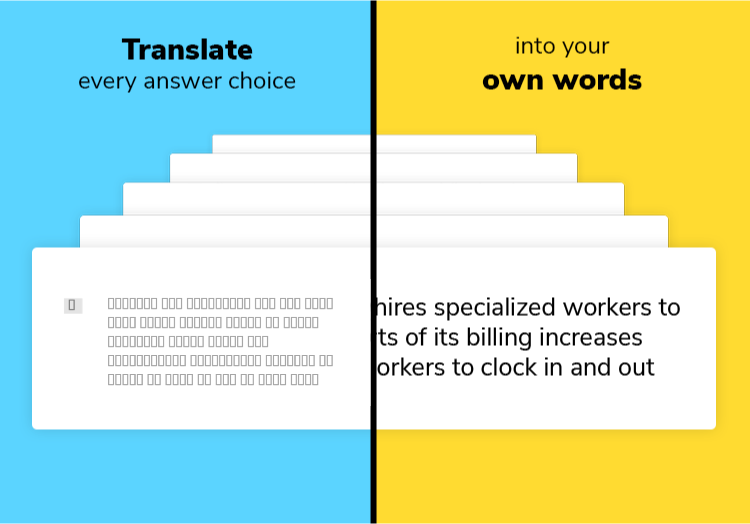
Always bear in mind that the act of reading and comprehending does not end with the RC passage. We MUST continue to read and comprehend questions and answer choices. Taking a step further, we must translate every answer choice into our own words to understand the precise information presented by it. Let’s take a straightforward example to understand this core skill’s implication. Suppose the passage says that “CO2 emission leads to air pollution”. Now, one of the answer choices to the question regarding the relationship between the CO2 emission and air pollution reads: They are like two sides of a coin. Will this choice be correct? No, because “two sides of a coin” means “always coexisting.” This is not the relationship that the passage presents. The passage illustrates the cause-and-effect relationship between CO2 emission and air pollution. For some reason, if one does not try to understand what “two sides of a coin” translates to, one may select this incorrect answer as one may think that if there is CO2 emission, there will be air pollution. Watch this session to witness the necessity of this core skill when we are served super complex answer choices in intricate structures.
3. Dos
The core skills must be betrothed to some Dos to prepare for RC in the best possible way for the most effective outcomes. Being an avid reader, an impeccable English speaker or a vocabulary champion is NOT the pre-requisite to ace RC. Absolutely anyone with core skills put to use through some Dos can score the 90th percentile on GMAT RC. Here is one example.
Absolutely anyone with core skills put to use through some Dos can score the 90th percentile on GMAT RC.
In this section, we will talk about two aspects:
- Best Practices to improve GMAT RC
- Tools to ace GMAT Reading Comprehension
3.1 Best Practices to Improve GMAT Reading Comprehension
- Attitude to ace GMAT RC
- Approach to solving GMAT RC passages
- Immersive Reading
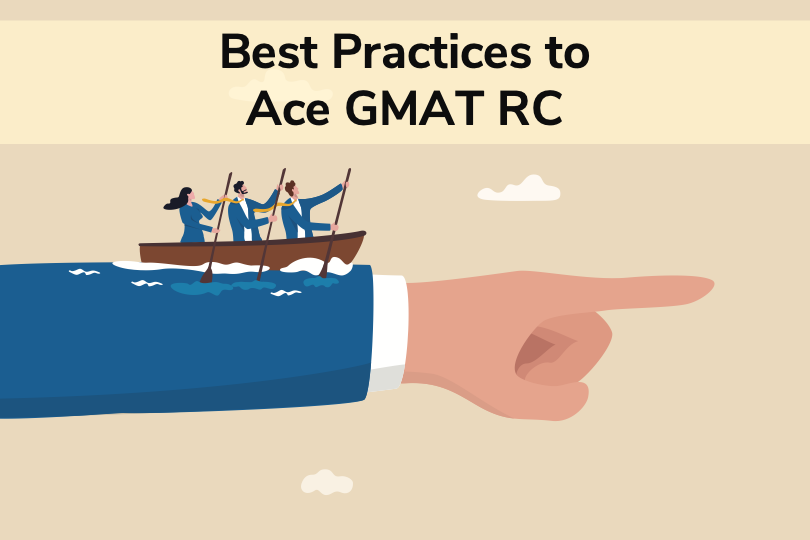
At e-GMAT, after years of research and trial-and-error, e-GMAT has zeroed in on some best practices that are imperative to excel in this sub-section. The best practices mentioned in this section are more concerned with our approach toward RC than tips to accelerate one’s starting ability. In other words, they are primer that enhances the outcome of the tips and tricks of trade adopted during the prep phase.
3.1.1 Attitude to ace GMAT RC
As one of our RC experts says, “Love RC, then only RC will love you.” This statement is true because anything approached half-heartedly CAN NOT produce desired results to its full potency. A score of 700+ is not achievable without at least 70th percentile ability, provided one is “freakishly” good in SC and CR. A score of 740 and more certainly requires one to be at the 90th percentile ability. In a nutshell, we can love RC, we can hate RC, but we CAN NOT avoid RC. So it is better to embrace it whole-heartedly!

3.1.2 The right Approach to solving GMAT RC passages
Skills require a proper approach for successful execution. The most scientific method to solve all types of passages and questions in RC is to pay one-pointed attention to understand the entire passage well so that answering questions becomes smooth. Don’t rush through the passage. It is wise to spend 2.5 to 3 minutes on the passage during the first read for effective comprehension so that you do not return to it every time you see a new question or a complex answer choice. Doing the latter leads to wasting a lot of precious time.

3.1.3 Immerse in the RC Passage
This strategy has to do with the attitude of the test takers toward RC. We have already mentioned that we need to love RC for RC to love us. After all, attitude determines the altitude. This best practice primes our minds to read any passage actively that comes our way. When we let ourselves delve deeper into the passage without inhibitions and reservations, that’s when we gain the treasure of perfect understanding that helps us answer questions correctly.

3.2 Tools and Tips to Improve Your GMAT Reading Comprehension Score
Here are the best tips to improve GMAT Reading Comprehension:
- Focus on keywords
- Summarize the passage
- Take notes
- Pause and predict
- Skim the details
- Abbreviate big words
- Understanding questions

After the primer come those skill-building tools that take us to the 90th percentile no matter where we start. Thus, this section can never be complete without mentioning the Key Reading Strategies the e-GMAT team has formulated after years of research and experiments. Our Key Reading Strategies have been helping students across the globe to fall in love with this most dreaded sub-section. The effectiveness of these strategies has been reflected time and again through the success stories of our students. So, let’s get to them.
3.2.1 Focus on Keywords
No emphasis on this tool’s application can justify its importance in comprehending the RC passage. Focusing on such keywords as, however, justly so, etc., helps us step into the author’s shoes and enhances our ability to understand the passage.
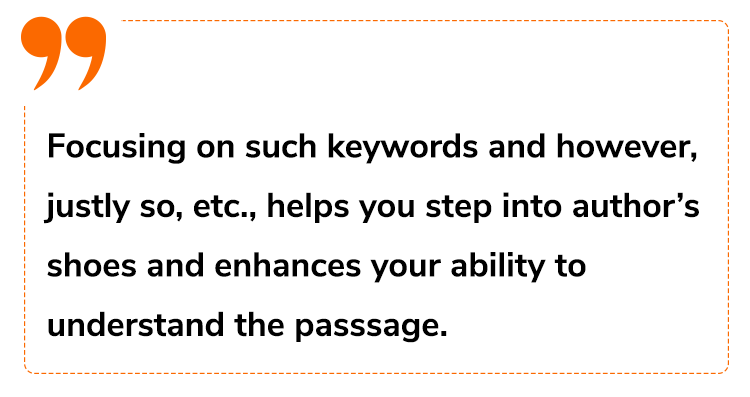
Keywords are also crucial in understanding the relationships among various pieces of information. Deciphering such information helps us draw logical inferences and thus answer the Inference questions correctly. Long story short, applying this reading strategy is of utmost importance to ace RC. Watch our session to witness the effect of this reading strategy in enhancing the comprehension of the RC passage.
3.2.2 Summarize the RC passage
As already mentioned, it is crucial to summarize each paragraph and then the entire passage in a few words to decipher its central theme or purpose. Summarization of individual paragraphs helps us stay focused on what is being discussed in the passage and identify the logical transitions from one paragraph to another. When we combine the summary of all the paragraphs to arrive at the passage summary, we can quickly identify the Main Point of the passage and answer the Main Point question without rereading the entire passage.
3.2.3 Take Notes
Jotting important information from the passage as we read along is another helpful reading strategy that helps us retain the significant points from the passage and not lose sight of them. Retention of information comes in handy while solving questions, as we can answer questions from memory without wasting time by returning to the passage.

3.2.4 Pause and Predict
We must often stop while reading the passage instead of reading the entire passage in one go. Doing the latter will only lead to information overload, and our brains will not be able to process any information from the passage. However, when we read slowly and pause to predict, we become actively engaged with the passage and derive the most out of it by remaining actively involved with it.
3.2.5 Skim the details
It is fine to skim through details in the given passage and return to the same if we find a question about that detail. We can read such information as an explanation of a technical process or an example, etc., quickly. Please note that skimming does NOT mean skipping altogether. Skim reading means quick reading without worrying about retention.
3.2.6 Abbreviate big words
This strategy is an excellent time-saving tool. Creating short forms of big, technical words in the passage rather than reading them every time they appear in the passage makes the reader time efficient. Think of the passage that talks about technological determinism and social constructivism. These terms are tongue twisters. If we call them TD and SC, respectively, life will be much easier.
Also, do not stop at the word the meaning of which you don’t understand. Keep reading further because the context of the passage will eventually help you understand the meaning of that word. That is how RC passages are written.
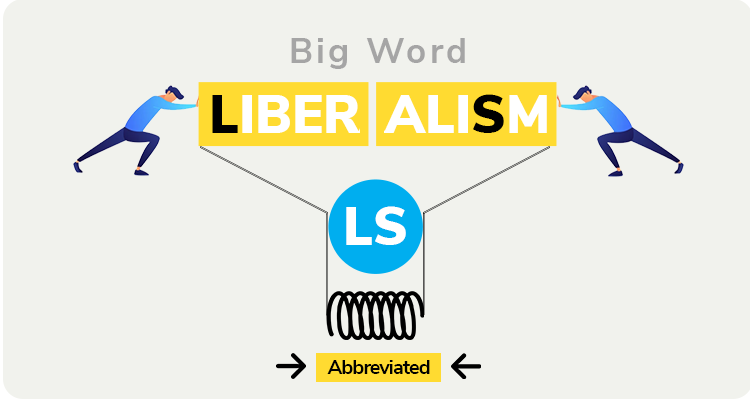
3.2.7 Understanding Questions
As mentioned earlier, one must attentively read and comprehend questions too. It is imperative to understand the demand of the question so we can pick the answer choice that best fulfills that demand. If we do not care to understand the questions, we maximize our chances of selecting an incorrect answer choice, especially if the answer choices are very crafty or misleading.
4. Don’ts – Top 5 Mistakes to avoid in GMAT RC
Wise men say that Don’ts MUST complement Dos to make the learning complete and holistic. It is as essential to avoid bad practices as it is to execute good practices. So, let’s learn what we must NOT do to safeguard our best practices to produce their effect to their best potency.
4.1 Section Hopping
When you prepare for RC, focus on this sub-section ONLY. Do the due diligence to learn all the trade tricks and attain mastery in them. Stay focused on this sub-section and do NOT even try to prepare for other sub-sections. Trying to learn multiple approaches for multiple sub-sections hinders effective learning because, in the process, we spread our attention thin among various areas.

4.2 Speed Kills
Speeding kills not only on roads but also on RC. The GMAC, in its Official Guides under the section “What Is Measured,” clearly states that the ability to understand sophisticated, nontechnical passages is tested through RC. Acing RC requires a complete understanding of all the information in the passage – explicit and implicit. The Main Point Questions and Style and Tone Questions directly test this ability while answering all other types of questions – Detail, Inference, Application, and Function – also implicitly depends on this skill. Speed reading hinders that understanding in the best possible way. Hear our student Nishant (GMAT Score 740) vouch for it.
4.3 Not Finishing What You Start
Is not this the mantra for success? Then why won’t it work to ac the GMAT RC? It is impossible to solve RC questions by reading just the passage’s first two and last lines. The general notion is that either of these two places contains the gist of the passage. But the GMAT OG books mention that correctly answering questions requires understanding all the information in the passage, in case you do not believe us. So do NOT cut corners when it comes to reading the entire passage.
Also, reading questions first and then going back to the passage to find the answer is a pretty plan to waste an enormous amount of time because this approach calls for reading the passage as many times as many questions. If you have not read the passage even once well, how will you know where to look for the pertinent information in the passage needed to answer the question correctly?

4.4 Not Decoding Those Cryptic Questions
Not taking time and effort to simplify each RC question is counterproductive. Certain question types such as Main Point, Function, Detail, and Style and Tone are pretty straightforward. However. Inference and Application questions, more often than not, contain a web of words that demands simplification. Those, who do not stop to simplify questions, get entangled in this web of words and kill their chances of answering such questions correctly. It is imperative to understand the demand of the question to answer it correctly.
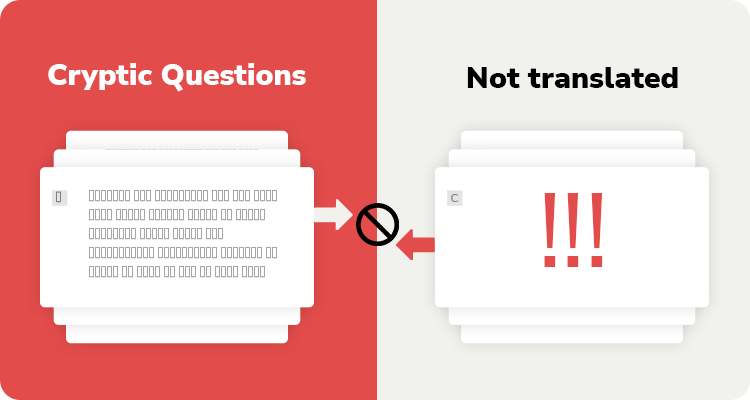
Sample this: It can be inferred from the passage that a study limited to patients like those mentioned in lines 20-22 [Often researchers restrict study participation to patients who have no ailments besides those being studied.] would have which of the following advantages over the kind of study proposed by Frazier and Mosteller? Just to set the context, this official passage talks about suggestions presented by Frazier and Mosteller (F & M) to improve clinical trials. This question asks about the advantage of the current clinical trials over the recommendation made by F & M. The author of the question has made sure they keep the reader entangled in the network of heavy expressions here and lose focus of the demand of the question. Hence, not decoding such convoluted questions may cost one dearly.
4.5 Reading Answer Choices Superficially
Not reading and interpreting the information presented by answer choices is as dangerous as not decoding complex-looking questions. Answer choices are perfect places for test-makers to employ various types of snares to trap test-takers who do not try to understand the meaning of different answer choices.
Some standard snares we spot in answer choices are using those expressions likely to be assumed by the readers who read the answer choices superficially. Another example of such a snare is the flip in the context. The author may present two pieces of information in two different contexts. An incorrect answer choice may flip the context. If the reader remains oblivious to this flip because of not interpreting the answer choice well, we can understand the consequence very well.

Watch our Free Live session to experience how those readers fare while solving a difficult official RC passage with these harmful practices.
5. Conclusion – How to improve GMAT Reading Comprehension
At e-GMAT, test-takers success keeps us motivated to churn everything GMAT so that we can translate our experience into our teachings. The strategies discussed in this article are evidence of the same. These strategies have worked for more than 200 students who scored 700+ in 2021. This information is just a fragment of data from the massive pool of success that we have had since we introduced our RC course. Take advantage of this article and ace the GMAT RC.


